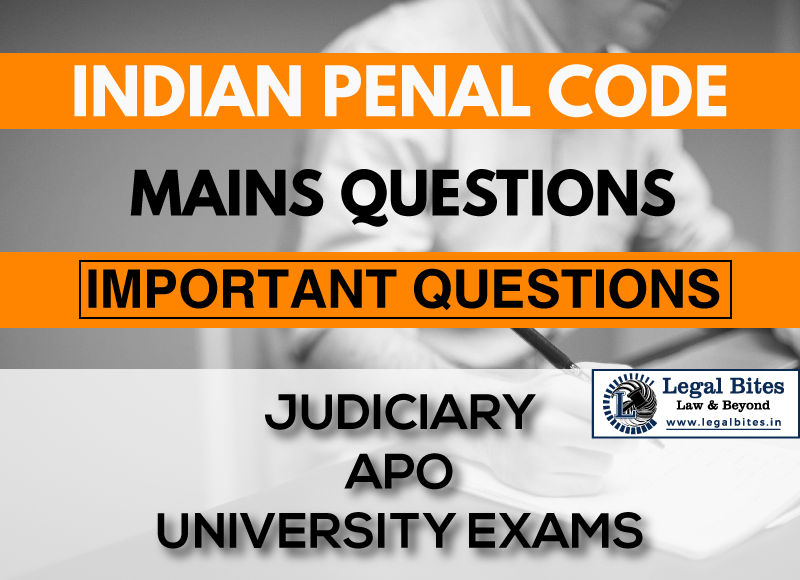Question: Criminal misappropriation | A finds a spanner of no appreciable value on a public road. He was caught by police when he was making an attempt to sell the spanner to B. Has A committed the offence of criminal misappropriation or attempt to criminal misappropriation? Give reasons and also refer to case law, if any, on the point? Find the answer to the mains question only on Legal Bites. Criminal misappropriation | [A finds a spanner of no appreciable value on a public road…....
Question: Criminal misappropriation | A finds a spanner of no appreciable value on a public road. He was caught by police when he was making an attempt to sell the spanner to B. Has A committed the offence of criminal misappropriation or attempt to criminal misappropriation? Give reasons and also refer to case law, if any, on the point?
Find the answer to the mains question only on Legal Bites. Criminal misappropriation | [A finds a spanner of no appreciable value on a public road…. Give reasons and also refer to case law, if any, on the point?]
Answer
A has not committed either the offence of criminal misappropriation or attempt to vomit misappropriation as under section 403, IPC.
Section 403 defines Dishonest misappropriation of property as Whoever dishonestly misappropriates or converts to his own use any moveable property.
Explanation 2 to the section says- A person who finds a property, not in the possession of any other person, and takes such property, appropriates it to his own use, when he knows or has the means of discovering the owner, or before he has used reasonable means to discover and give notice to the owner and has kept the property for a reasonable time to enable the owner to claim it is liable under this section.
What are reasonable means or what is a reasonable time in such a case, is a question of fact. It is not necessary that the finder should know who the owner of the property is, or that any particular person is the owner of it; it is sufficient if, at the time of appropriating it, he does not believe it to be his own property, or in good faith belief that the real owner cannot be found.
Illustration (a) to section: A finds a rupee on the high road, not knowing to whom the rupee belongs. A picks up the rupee. Here A has not committed the offence defined in this section.
In the case of Bhagiram Dome v. Abar Dome (1888) ILR 15 Cal 388, the court has held that criminal misappropriation takes place not when one has innocently come into the possession of a thing, but when by a subsequent change of intention, or from the knowledge of some new fact with which the party was not previously acquainted, he keeps it, after which the retaining becomes wrongful and fraudulent.
In the present case, A finds a spanner of no appreciable value on a public road. As the facts show there was no dishonest intention on the part of A or he has any reasonable means to ascertain the owner of the spanner on a public road. Hence, A shall not be held guilty under section 403 for criminal misappropriation or attempt at criminal misappropriation.
Important Mains Questions Series for Judiciary, APO & University Exams
- IPC Mains Questions Series Part I: Important Questions
- IPC Mains Questions Series Part II: Important Questions
- IPC Mains Questions Series Part III: Important Questions
- IPC Mains Questions Series Part IV: Important Questions
- IPC Mains Questions Series Part V: Important Questions
- IPC Mains Questions Series Part VI: Important Questions
- IPC Mains Questions Series Part VII: Important Questions
- IPC Mains Questions Series Part VIII: Important Questions
- IPC Mains Questions Series Part IX: Important Questions
- IPC Mains Questions Series Part X: Important Questions


